Car buyers who wish to take advantage of new technology electric vehicles — either battery electric vehicles or plug-in hybrid vehicles — have several choices. With no additional electrical system upgrade to their home, battery electric vehicles and plug-in hybrid electric vehicles can be charged using a standard 120-volt, 20-amp receptacle. This is referred to as Level I charging. Unfortunately, a full charge at this voltage can take quite some time, generally estimated at 8–20 hours. If a shorter charge time is desired, a 240-volt charging station can be installed which cuts charge time approximately in half. This is referred to as Level II charging, and connections are achieved using a standardized connector manufactured to SAE J1772. For an even faster charge, Level III chargers operate at 480 volts and can charge a vehicle in less than half an hour; these are presently rare, not fully standardized and only available in non-residential locations.
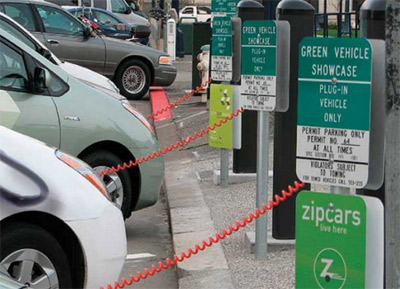
Photo 1. Plug-in vehicle street charging

Figure 1. Wheel to Wheel Annual Fuel Cost
Although the majority of initial battery electric vehicle purchases will probably be to those who have the ability to charge their vehicle via 120-volt or 240-volt connections at their residence, public charging stations will be absolutely essential for certain electric vehicle owners. Those buyers who live in locations that either do not have the capacity in their residential electrical system to plug in a continuous load or add a Level II charging station, or that do not provide physical access to the electrical system to plug in even at 120 volts, will need quick, convenient public charging options. Public charging will also be essential for long distance travel, such as traveling on vacation, relocating or commuting long distances. Since battery sizes are currently kept small to reduce weight and cost, pure electric vehicles are impractical for anything other than short distance commutes or running errands close to home.
Existing multifamily housing may not have adequate electrical access or capacity for easily charging electric vehicles. Even units with garages or dedicated parking are not likely to have receptacles accessible for charging an electric vehicle, and a 240-volt receptacle is especially unlikely. New multifamily projects might plan for electric vehicle charging, especially in green construction projects. Retrofit installations might also be possible, but will require a significant investment and careful evaluation of the electrical system.
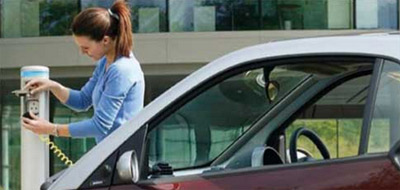
Photo 2. Public charging
For those who do buy battery electric vehicles, it is likely that a combination of in-home and public charging will make the most sense, with most charging done in the home. Those fortunate enough to work in places where battery charging facilities are available will likely take advantage of them. Green buildings that provide spaces and charging facilities for electric vehicles will likely influence employees and encourage the purchase of battery electric vehicles, particularly where the consumer has a second vehicle for extended travel and tends to commute every day between home and office.
What’s the charge for a charge?
Charging patterns can affect the cost per mile for battery electric vehicles. Most utilities have a time of use rate that significantly reduces the amount paid during off-peak hours. The impact on utilities of electrically charged vehicles is still uncertain and depends on charging patterns of vehicle owners. Peak and off-peak rates, home or commercial charging, 120-volt or 240-volt, and utility controlled charging can all be influencing factors. Many charging systems are being designed to communicate with the utility system to optimize vehicle charging, either to minimize cost to the consumer or impact to the utility.
The “Wheel to Wheel Annual Fuel Cost” table compares the cost of fuel for various types of vehicles, and is based on a gasoline cost of 3 dollars per gallon and 8.5 cents per kilowatt-hour. The fuel benefit is significant, and becomes even more so with rising gasoline prices.
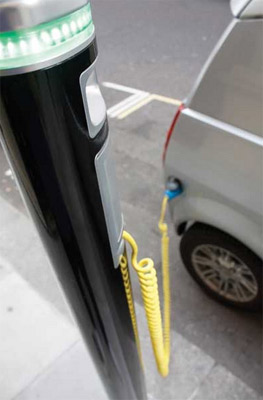
There are differing estimates of how much it will cost to operate an electric vehicle, and much of the variability comes from the impact of how the vehicle is driven. Drivers who take short trips and use only the battery will pay less than those who rely on an assist from a gasoline engine. Temperature affects the battery performance, and electricity prices vary from utility to utility. What the sources do agree on is that fuel costs for electric or plug-in hybrid vehicles will be substantially less than gas-fueled vehicles, and the environmental impact of electric vehicles is also less than that of gas-fueled vehicles.
What should inspectors look for?
Inspectors will have to be aware of the impact of 240-volt (and 480-volt) charger installation on existing and newly constructed electrical systems. Some charging units are permanent and hard-wired, while others are meant to be cord-and-plug-connected. Even the cord-and-plug-connected units are not truly portable; they are meant to be installed permanently and only moved when the owner changes residences.
The inspector will not be involved when an electric vehicle is purchased unless the owner decides to install a 240-volt charger at home or a commercial battery charger is installed either on public or private property. If a Level II charging station is installed in a residence, there are several safety considerations. Capacity is the number one concern. Many homes may not have the capacity to add a 40-amp or higher circuit breaker in the existing electrical panel, which would require the homeowner to upgrade the service in order to add the charger. All charger manufacturers recommend or require a licensed electrician, and many of the electric vehicle manufacturers require an installer certified by the manufacturer.
Location of the charger is also an issue. Some chargers are intended only for indoor use and have a NEMA 1 enclosure, while others are listed for outdoor use with a suitable enclosure. Temperature operating range is typically -40°F to 122°F, which will include most areas of the United States. Installation instructions for home chargers have installation height requirements and other specific instructions that must be followed for safe operation. The electrician should have the manufacturer’s instructions available for the inspector to review at the time of the inspection. GFCI breakers are generally not recommended for charging stations with built-in ground fault protection.
Public charging locations

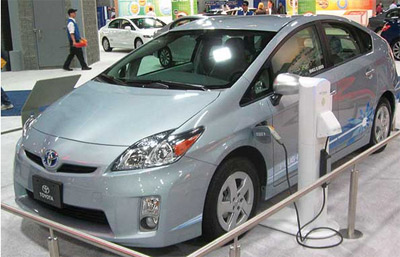
Project Get Ready is an initiative led by the Rocky Mountain Institute in partnership with many sponsors and technical advisors. The goal of Project Get Ready is to prepare cities for the influx of electric vehicles, and there is a wealth of information available on their website at projectgetready.org.
Level II chargers
There are many companies that are offering Level II chargers for residential or commercial use. Car manufacturers may also manufacture charging equipment, but more often will contract with a separate equipment manufacturer. There are also independent companies offering charging solutions, which is only possible due to the increasing standardization of connectors and equipment. The table shows a comparison of a few electric car models and the cost of a Level II residential charger.
One example of a non-automotive company entering the charger market is Schneider Electric, who is now offering a Level II indoor residential charger for about $1000 that provides a full charge in 6 to 8 hours. The company provides a network of trained contractors for installation. If the customer uses one of these certified installers, the charger warranty is extended. The charger operates at 240 volts and 30 amps, and includes ground-fault protection and automatic recovery after ground-fault interruption or a power outage. A two-pole, 40-amp breaker is required, and the conductor size is required to be a minimum 8 AWG copper or 8 AWG aluminum. As with all electrical installations, Schneider requires that the charger be installed by qualified electrical personnel, and warns that the torque requirements on the equipment must be followed to avoid heat and fire damage. To properly tighten the connections, a torque screwdriver must be used. The residential charger also has the ability for delayed charge scheduling, and options include advanced metering capability.

Photo 5. Vehicle charging connector
Although most Level II chargers operate at about 30 amps, the range can extend up to 80 amps. The Tesla charger operates at 208 to 240 volts, and requires a 90-amp circuit breaker. The maximum current is 72 amps, so determining the capacity of the electrical system is critical. Many homes have only a 200-amp service; even with normal residential diversity, a device that requires a continuous demand of 35% of the service can be significant. The Tesla home charger has ground-fault protection with self-testing and automatic reclosure that operates in case of a ground fault detection or power loss. Tesla estimates that charging will cost 2 cents per mile, based on average electricity prices.
An Uncertain Future
Although electric vehicle options and sales are increasing, there are still many questions in the minds of potential electric vehicle buyers. EPRI conducted a survey of southern California residential customers (published in 2010) to explore the general perception of electric vehicles and charging. They found that many respondents had questions or concerns about where they would charge their vehicles and what the payback period would be. The recommendation from the study is to create a strong public education program that addresses the uncertainties (including safety and range anxiety) and reassures potential buyers. The results of the survey also included the following findings, which are mostly positive:
- Consumer charging preferences: Virtually all rspondents indicated that they expected to charge their PHEV primarily at home.
- Accessibility of at-home charging locations: Almost two-thirds of respondents indicated that they had a conventional (120-V) outlet within 25 feet of where they park at home.
- Vehicle acquisition interest: Over 50% of hybrid owners, compared to 28% of conventional vehicle owners, indicated that the next new vehicle they acquire would probably or definitely be a PHEV.
- Gasoline prices: As gasoline price rises to $4.00 per gallon (from a reference price of $3.00 per gallon), consumers stated intentions to acquire a PHEV also rise.
- At-home charging plan preferences: Nighttime charging was acceptable to over 80%.
- Social networking influences: The vehicle acquisition decision is influenced more by what co-workers, friends, and neighbors drive than by dealers or promotional materials.
Many questions are still unanswered: what is the failure rate of electric vehicle chargers; how much maintenance will be required; how long would it take to get a replacement unit if it failed; how would the car owner charge the vehicle if the unit needed repair or replacement? For public charging, questions center around availability of stations and the cost of charging. The uncertainty surrounding both at-home and public charging infrastructure can be a serious impediment to the acceptance of electric vehicles. Car travel is an ingrained part of daily life for the majority of Americans, and many are reluctant to take a chance on new technology without assurance that the reliability of all aspects of electric vehicles will be equal to that of traditionally fueled vehicles. Nevertheless, sales of electric vehicles in the U. S. are expected to grow quickly in the future, and the electrical grid and charging infrastructure are going to have to rapidly adjust to accommodate the market.









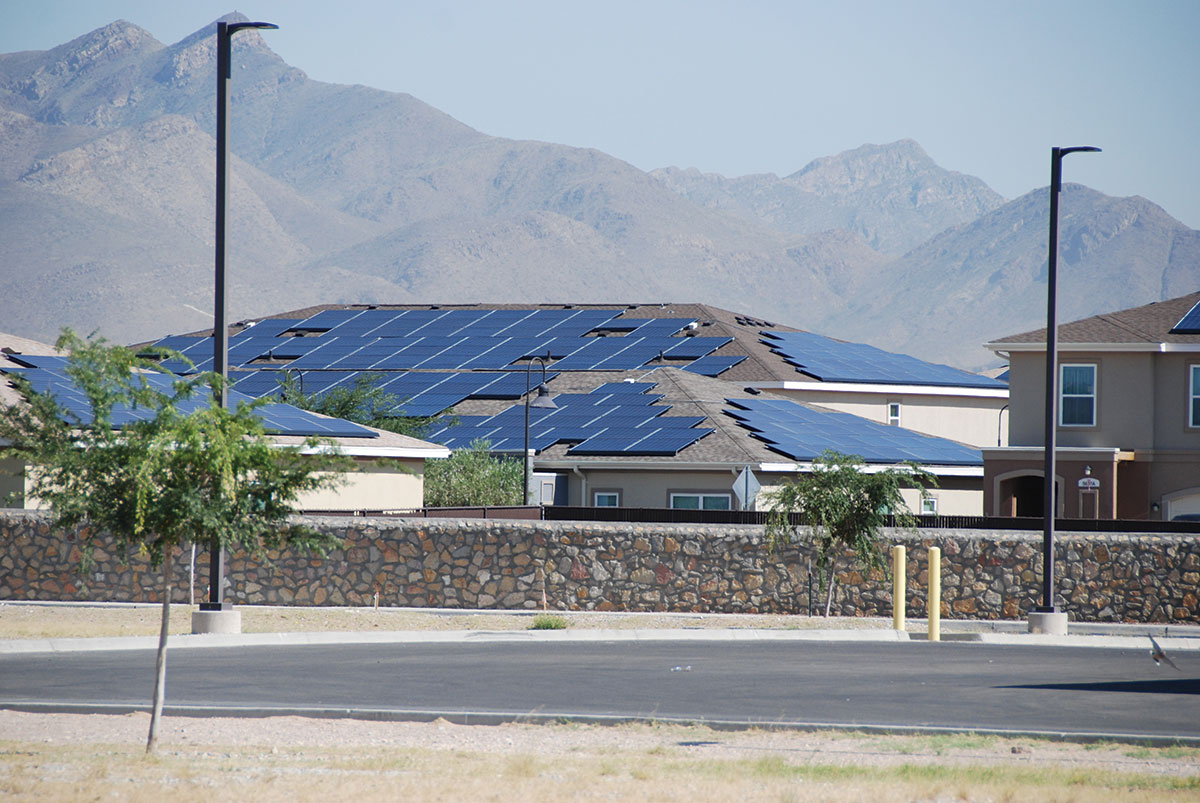
Find Us on Socials